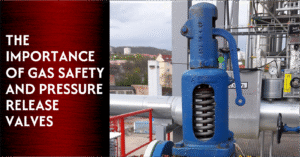Indoor air quality (IAQ) is a crucial factor influencing the health, comfort, and productivity of building occupants. From residential homes to large commercial spaces, understanding and managing the quality of the air inside is essential for creating safe and healthy environments. This article will guide you through the basics of indoor air quality, how to measure it, and practical strategies for improving it.
What is Indoor Air Quality?
Indoor air quality describes the condition of the air inside a building, directly affecting the health and comfort of its occupants. Various factors shape air quality, including pollutants, humidity levels, ventilation, and overall cleanliness. Common indoor air pollutants—such as particulate matter, volatile organic compounds (VOCs), carbon dioxide (CO2), mould, and dust—can trigger health issues, from allergies to serious respiratory conditions.

How Can I Measure Indoor Air Quality?
Measuring indoor air quality involves evaluating the presence of specific pollutants and the overall air composition. There are several ways to monitor IAQ, from using simple tools to more advanced systems. Our Air Quality Monitors are the perfect instrument to do so. Common aspects of IAQ that are typically measured include:
- Particulate Matter (PM2.5 and PM10) – Fine particles in the air that can penetrate the respiratory system and cause health issues.
- Carbon Dioxide (CO2) – Elevated CO2 levels can indicate poor ventilation and lead to fatigue and discomfort.
- Volatile Organic Compounds (VOCs) – Chemicals emitted from paints, cleaning products, and furniture that can irritate the eyes, skin, and respiratory system.
- Humidity Levels – High or low humidity can promote mould growth or dry out respiratory passages.
- Air Temperature – Extreme temperatures can affect comfort and health.
Why Should I Measure Indoor Air Quality?
Measuring IAQ is essential for several reasons:
- Health and Well-being: Poor air quality can cause headaches, fatigue, respiratory problems, and allergies. Long-term exposure to indoor air pollutants can lead to chronic conditions such as asthma and bronchitis.
- Productivity: In workplaces, poor air quality can lead to reduced concentration, lower cognitive performance, and decreased overall productivity.
- Energy Efficiency: Regular monitoring of IAQ can help optimize ventilation systems, ensuring they are functioning efficiently, which can also improve energy efficiency.
- Compliance with Regulations: Many countries have standards and regulations regarding indoor air quality, particularly in commercial spaces. Regular monitoring helps ensure compliance.
How to Measure Indoor Air Quality?
To effectively measure indoor air quality, it is necessary to use appropriate tools and techniques. Here’s how:
- Portable Air Quality Monitors: These handheld devices can measure a range of pollutants including particulate matter, CO2, and VOCs. They are easy to use and provide immediate feedback on IAQ. See our product range here.
- Fixed Monitoring Systems: Installed in a building, these systems provide continuous monitoring of air quality and can be linked to a central control system for real-time analysis.
- Smart HVAC Systems: Modern HVAC systems come equipped with sensors that monitor IAQ in real time and adjust ventilation rates accordingly to maintain optimal conditions.
Simple Systems
Improving indoor air quality doesn’t always require complex systems. Simple actions can go a long way in making a difference:

- Improve Ventilation: Ensure your building is properly ventilated. Opening windows or using exhaust fans can help air flow and reduce the concentration of pollutants.
- Air Purifiers: Air purifiers with HEPA filters can help remove particulate matter, dust, and allergens from the air.
- Houseplants: Certain indoor plants, such as peace lilies and snake plants, can help absorb toxins and improve air quality naturally.
- Regular Cleaning: Keeping the building clean by regularly dusting and vacuuming can reduce the build-up of harmful particles in the air.
Complex Systems
For larger or more challenging environments, complex air purification and filtration systems may be necessary. These systems can provide comprehensive solutions for improving IAQ:
- Advanced HVAC Filtration: Upgrading your HVAC system to include higher-quality filters (such as HEPA or UV filters) can significantly improve the air quality.
- Our Sanitising Lights: New patented visible light wavelengths can be used to disinfect air and surfaces, killing harmful microorganisms like bacteria, viruses, and mould spores. These systems are new and highly effective at keeping environments continuously clean.
- Automated IAQ Control Systems: These systems use sensors to continuously monitor air quality and adjust ventilation, filtration, and humidity control automatically to maintain optimal conditions.
- Air Recirculation Units: Advanced air recirculation units filter and purify the air, removing contaminants while maintaining indoor temperature, ensuring a comfortable and clean environment. They can be installed as stand alone units, or in multiple rooms in a master-slave format.
Indoor Air Quality Maintenance
Maintaining good indoor air quality requires ongoing efforts to monitor and manage the air. Here are some key maintenance practices:
- Regularly Replace Filters: HVAC systems and air purifiers require filter changes to maintain efficiency. Depending on the system, filters should be replaced every 3-6 months.
- Check Humidity Levels: Use humidifiers or dehumidifiers to keep indoor humidity levels within the optimal range (40-60%). This helps prevent mould growth and respiratory irritation.
- Monitor Air Quality Continuously: Set up a routine for checking air quality using portable monitors or fixed systems to catch any potential issues before they affect occupants.
- Service HVAC Systems: Regular maintenance and cleaning of your HVAC system ensures it continues to operate efficiently and doesn’t contribute to poor air quality.
The Future
As we continue to learn more about the impact of indoor air quality on our health and well-being, advancements in technology are paving the way for more effective solutions. Innovations like sanitising lights and air recirculation units are leading the charge in improving IAQ.
Our sanitising lights, for example, utilize visible light technology to kill airborne pathogens like viruses, bacteria, and mould without affecting the surrounding environment – they’re completely safe, incredibly effective, and can replace your regular light installations. These systems are especially valuable in high-risk areas, such as healthcare facilities, schools, and hospitality settings.
Similarly, air recirculation units offer a solution for purifying indoor air while retaining comfortable temperatures. These units remove pollutants and allergens, ensuring that indoor spaces are clean and healthy, without the need to adjust the building’s climate control settings. With these advanced systems, businesses and homeowners can improve IAQ more efficiently and effectively, creating safer and more comfortable environments for everyone. As the demand for clean indoor air continues to grow, the future of IAQ will likely see even more integrated and automated solutions that make air quality management easier and more effective.


By measuring and improving indoor air quality, you not only ensure a healthier environment for occupants but also enhance productivity, comfort, and overall building efficiency. Whether through simple measures or sophisticated systems, addressing IAQ is a step toward a cleaner and more sustainable future.








